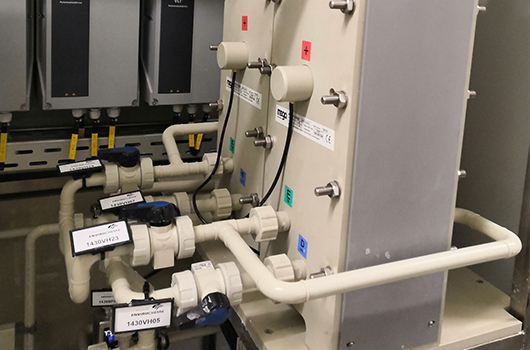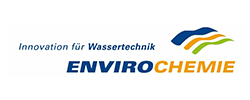In the treatment of industrial wastewater, high salt contents causes particular difficulties during biological treatment. Additionally, desalination is necessary to protect the environment from the discharge of high salt loads. Treatment with energy-efficient electrically-driven membrane processes is a suitable method to achieve this purpose.
Industrial wastewater is often characterized by high salt contents, which is problematic for water treatment with traditional treatment processes. In particular, if the water is to be reused after treatment, traditional processes must be supplemented with desalination processes. However, commercially available desalination processes (thermal desalination or pressure-driven membrane processes) are energy-intensive, resulting in high treatment costs. Electrically-driven membrane processes can be operated more energy efficiently and thus more economically to desalinate moderately polluted saline wastewater (conductivity of approx. 2-3 mS/cm). This can reduce the economic hurdles for water reuse projects. As representatives of the electrically-driven membrane processes, electrodialysis (ED) and membrane capacitive deionization (MCDI) were tested in the WaReIp project for the desalination of saline production wastewater from the chemical-pharmaceutical industry (conductivity of approx. 8-10 mS/cm). In particular, ED was able to desalinate water to different salinity levels so that it can be used for several reuse purposes. Water reuse for agricultural irrigation, artificial groundwater recharge, and cooling water provision were considered. The use of the ED and MCDI was characterized by high operational flexibility. Simple process control allows them to respond quickly to changes in inflow or to provide water of varying quality.


